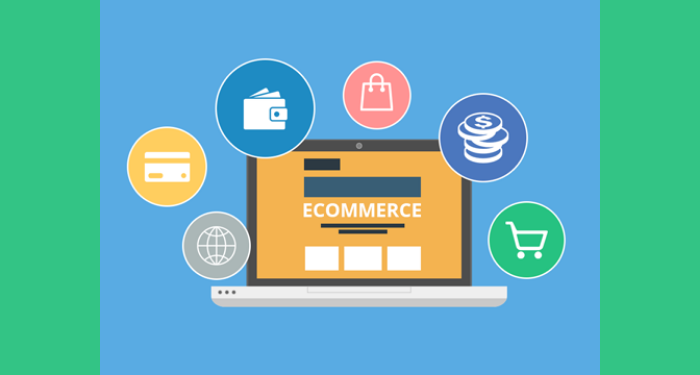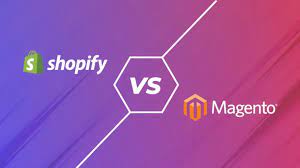Choosing the right e-commerce platform can make or break your online business. In the bustling world of digital sales, leading e-commerce platforms compete to give you tools for success. Whether you’re launching a new venture or looking to expand, each platform offers a unique flavor. But with so many on the market, how do you decide which reigns supreme for your business? From juggernauts like Shopify to niche players like Etsy, we’ll dissect features, ease of use, and scalability to guide your decision. Dive into the commerce battle to arm your business with the best digital arsenal. Let’s explore together and crown the king of online sales platforms.
Understanding the E-Commerce Platform Landscape
When you sell online, picking the right e-commerce platform is key. Don’t worry – I’m here to help you find the best fit for your shop.
Comparing Top Online Marketplace Platforms
Let’s dive into the world of online marketplaces! Amazon is a giant, no surprise there, and eBay makes online selling a breeze. But have you thought about using Etsy or Wix to sell your special items? These sites help you find customers that love unique goods.
Now, think about what you need. If you want a huge crowd, Amazon’s your stage. If you’re all about setting your own rules, maybe eBay or Etsy’s more your style. Remember, the right place is where your stuff and your customers match up best.
Popular E-Commerce Software for Different Business Sizes
Business size matters when you pick e-commerce software. Starting small or aiming big, there’s a software that fits just right. Shopify is like a friendly shop on a busy street, while Magento is a massive mall, and WooCommerce turns your WordPress site into a cool little boutique.
For the little guys, WooCommerce is awesome because it’s easy and not too pricey. BigCommerce is great for growing businesses, and it’s a snap to use. Think of it as getting a bigger boat for deeper waters. Shopify Plus, now that’s for the sharks, the big fish in the sea. It grows with you, and you’ll never feel too squeezed in.
So, put on your thinking cap. Look at your shop’s size and where you want to go. Then pick the e-commerce software that makes sense for you. It’s like choosing a home – you need the right-size place to make it all work.
Each e-commerce option has different tricks. Shopify loves to make your store look just right. It’s also great at helping folks swing by your store. Magento is mighty and can handle lots of stuff at once. It loves businesses that sell tons of different things.
WooCommerce is like a handy tool you hook onto your blog or website. It turns it into a nifty shop without much fuss. Plus, you can add on things with plugins, kind of like legos for your e-commerce store.
Small to medium businesses shine with these platforms because they’re made for you. They know you’re not a tech wizard and keep things simple. This way, you spend time selling, not scratching your head over a computer screen.
Your shop’s experience matters tons for customers, too. They want shopping without hitches – easy peeks at products and a snap to pay. E-commerce platforms get this and work hard to keep your shop humming and customers happy.
Lastly, never forget safety first. Keeping your shop safe online is just like locking up at night. Strong e-commerce cybersecurity measures keep the baddies out. You sleep well, and so do your customers, knowing their stuff is safe with you.
Now, you’ve got a good start on the map of e-commerce platforms. Think over what your business needs, how big you plan to grow, and what your customers like. Then, take a leap and gear up your store on the right platform. Happy selling!
In-Depth Analysis of Major Players: Shopify, Magento, and WooCommerce
Shopify vs Magento: An E-Commerce Showdown
When you’re looking to sell online, choosing the right platform matters. Shopify and Magento are big names, but which is best for you? Let’s weigh in!
Shopify is like a friendly mall. It’s easy to start a store and make it look cool. They do most of the work for you, but you pay rent with monthly fees. Magento is like your own store space. You can create anything but it takes more tech know-how. Plus, you’re in charge of security and maintenance.
So, comparing Shopify vs Magento: Shopify is simpler to use. Magento offers more control if you’re tech-savvy. Shopify’s like your plug-and-play option. Magento is for those who crave custom stuff and have the skills to back it up.
WooCommerce Features and User Experience Improvements
Now, let’s chat about WooCommerce. It’s a free plugin that turns your WordPress site into a store. Imagine your blog transforming into a mini Amazon. That’s WooCommerce magic!
WooCommerce features are plenty. They let you sell anything, anywhere. It’s not just about products. Think bookings, memberships, and even subscriptions. Plus, you can pick from loads of free and paid plugins to grow your store.
Great user experience in e-commerce is like a smooth path to the checkout. With WooCommerce, you can make buying easy and fun for your customers. Quick product finds, simple checkouts, and easy account management are must-haves.
So, the Shopify store customization is about drag-and-drop ease. Magento is the master of tailor-made shops. And WooCommerce? It’s all about turning your existing site into a sales powerhouse. Each has its charm. It’s about picking the fit that’s perfect for your business story.
Emerging Trends and Niche Platforms in E-Commerce
The Role of Squarespace and OpenCart in Today’s Market
Let’s talk about the little guys in e-commerce. No, not small businesses — I mean the platforms they use. Squarespace and OpenCart aren’t as big as Shopify or Amazon, but they play a huge role. Squarespace makes e-commerce pretty and easy. With it, artists and creatives build beautiful online stores. Imagine a gallery, but for shopping. That’s Squarespace for you.
OpenCart, on the other hand, is free and open source. It’s like a DIY kit for online shops. You can add things or change it as you like. Plus, if you’re good with tech, you save money. Both of these platforms have a spot in today’s e-commerce world. They help certain kinds of shops to shine.
Leveraging Etsy and Wix for Unique Sales Channels
Now, we dive into Etsy and Wix. Let’s start with Etsy. It’s like a treasure chest for handmade and vintage items. Not everything can sell well here, but if you make unique stuff — bingo! You’ll find shoppers who look for one-of-a-kind goods on Etsy.
Next up, Wix. It’s not just for building any website; it’s also for online stores. Wix is all about being user-friendly. It helps you create an e-commerce site without pulling your hair out. It’s perfect for folks who are not so techy. Building a store can be as easy as drag-and-drop. Wix also has tools to help your store grow.
So, why choose these platforms? With them, you can offer things that big, general stores can’t. Plus, you can make your shop feel more personal. They help you connect with customers who want something special. Isn’t that what every store owner wants? To stand out and be the go-to place for something unique?
Remember, while giants like Shopify and Amazon have a lot to offer, these smaller platforms carve out niches that can lead to big success. Squarespace, OpenCart, Etsy, and Wix each have a role to play. They help certain shops to stand out in a crowded online space, which is key to making sales.
So before you jump on the biggest platform, think about what you sell. Think about who your customers are. There might just be a niche platform that fits your business like a glove. And that, my friends, can be your secret weapon in the battle of e-commerce.
Scaling Your Business with the Right E-Commerce Solution
Exploring Scalability: Shopify Plus and Enterprise-Level Platforms
Dream big, they say, and I’m here to help your big dreams take shape. With the right tools, growing your business can feel like a breeze. This isn’t just a feel-good pep talk—I’m guiding you to what actually works. Take Shopify Plus. Built for the long haul, it lets you grow without hiccups. Why do you think it’s a hit with big brands? Because it’s powerful.
Shopify Plus is a big deal; it powers over 10,000 large businesses. It’s a top pick when considering an e-commerce platform for scalability. Now, let’s pivot to Magento, a name that surely rings a bell. It’s a heavy-hitter in e-commerce, especially if customization is your jam. Magento’s flexibility lets you tailor your store to the T. It can scale, too. Yet, it’s a bit like a beast that needs taming—tech savvy is a must.
What about other enterprise tools? Think of them as your online superpowers. They can handle loads of traffic, products, and complex discounts with a snap. Their security? Top-notch. But here’s the thing: they demand a solid team to run them effectively. The right choice depends on your team, tech skills, and the future you envision.
The Importance of Multi-Channel Retailing and International Solutions
Now, let’s weave multi-channel retailing into our tapestry. Once your store rocks online, it’s time to be everywhere your customers are. Marketplaces, social media, and even brick-and-mortar, if that’s your thing. Why stick to one playground? Play the field with eBay, Amazon, and others.
Cue in international solutions, and world domination doesn’t seem far off. Your e-commerce platform should help you cross borders with ease. International solutions in platforms can handle multiple currencies, taxes, and shipping intricacies. It’s about making customers feel at home, no matter where they are.
Bottom line: Choosing the right e-commerce platform is crucial for growth. It’s a combo of Scalability, multi-channel prowess, and international smarts. Shopify Plus and the likes show that big dreams can become giant realities. Be smart, choose wisely, and prepare to take over the e-commerce world.
We’ve covered plenty in this post, from comparing the top dogs like Shopify and Magento to exploring WooCommerce’s cool features. We also dug into Squarespace and OpenCart’s role in the market. Don’t forget how Etsy and Wix can open new doors for selling unique stuff.
My final thought? Picking the right e-commerce platform is huge for your success. Whether you’re just starting out or aiming big, the right tools make all the difference. Keep an eye on emerging trends and always think about how you can sell on multiple channels, not just one. That way, you’ll nail it no matter where you sell or how big you grow. Keep pushing for that perfect match, and watch your business soar.
Q&A :
What are the top e-commerce platforms used by businesses today?
In the ever-evolving digital marketplace, businesses frequently seek the most reliable and scalable e-commerce platforms. Key players like Shopify, Magento (now Adobe Commerce), WooCommerce, and BigCommerce consistently rank at the top due to their comprehensive features, user-friendly interfaces, and versatility. Each platform has its unique set of tools and integrations that cater to different business sizes and types, from small startups to large enterprises.
How do you choose the right e-commerce platform for your business?
The choice of an e-commerce platform is critical and hinges on several factors, including your budget, technical expertise, the scale of your operations, and the specific features you need. Start by evaluating the platform’s ease of use, customization possibilities, payment gateway integration, SEO capabilities, mobile responsiveness, and available support. Comparing these factors against your business requirements can help you decide on the right platform.
What are the benefits of using a leading e-commerce platform over a custom solution?
Leading e-commerce platforms bring a host of benefits compared to custom solutions. They typically offer a lower initial cost, faster launch times, a wide range of out-of-the-box features, ongoing updates, and a community of users for support. Moreover, these platforms are designed with SEO in mind, offering various tools and plugins to help your online store rank better in search engine results, which can be a complex task with custom-built solutions.
How do leading e-commerce platforms handle scalability and growth?
Top e-commerce platforms are engineered to support business growth and scalability. They allow you to add more products, handle increased traffic, and expand to new markets without significant changes to your infrastructure. Advanced platforms offer cloud-based services, which provide elasticity in resources ensuring that your site performance is maintained during traffic surges and that you only pay for the resources you use.
Can you integrate third-party apps with leading e-commerce platforms?
Yes, one of the strengths of leading e-commerce platforms is their ability to integrate with a wide array of third-party applications and services. This integration capability enables businesses to extend the functionality of their online stores, incorporating everything from advanced analytics, customer relationship management (CRM) systems, email marketing tools, to payment gateways and shipping services. Most platforms have an app store or marketplace where you can find and install these add-ons easily.



